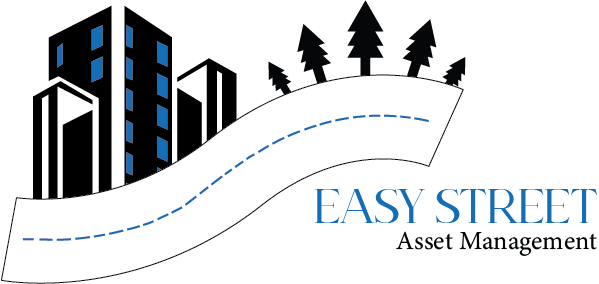At Easy Street we invest in cash-flowing, B and C class properties. Multifamily properties are a great source of passive income and appreciation. Multifamily allows for economies of scale in our operations, and values are derived from Net Operating Income. This allows us to be in more control of our forced appreciation.
The safest and best way to hedge against market volatility is through multifamily real estate. With inflation at a 40 year high, investing in commercial real estate one of the most foolproof ways
Benefits of multifamily investment properties
When it comes to investing in real estate, multifamily properties come with considerable benefits.
- Cash flow
One of the biggest benefits of investing in multifamily real estate with Easy Street is the promise of a reliable monthly cash flow from rental income. While single family homes have only one tenant or group of tenants, multifamily properties have multiple tenants paying rent. If there’s a vacancy in one unit, you’ll still likely have cash flow from other units. Easy Street Asset Management does its due diligence and comes up with an aggressive and safe investment strategy.
- Safe Investment: Inflation and Recession proof
Inflation: The best way to hedge against our current high inflation is through multifamily investments. While the purchasing power of our currency falls during inflation and the dollar may be required to pay for expenses more frequently, multifamily rents commonly increase at the same time. This along with the increasing value of the property can help gain significant value as inflation grows.Recession:Multi-family real estate has a proven track record of providing high risk-adjusted returns. In fact, it outperformed all other forms of commercial real estate throughout the Great Recession. People will always need an affordable place to live; Workforce housing in particular, shows continuous evidence of strong demand as the rents are deemed more affordable for lower and middle-income households. These workers include teachers, social workers, police officers, firefighters, and blue-collar workers.
What Makes Apartments Recession-Resilient?
Lower Delinquency Rates: During the 2007-2009 recession, which was also arguably the worst economic downturn in U.S. history, the economy skyrocketed with high unemployment rates of up to 10% nationally. During this financial crisis, multi-family performed very well compared to other asset classes. Reports from Urban Institute show that from 2007 to 2018, delinquency rates hovered below 0.5% and at times lower than 0.1%. This phenomenal track record on extremely low defaults supports the strength of this asset class.
- Easier to finance
When it comes to investment properties, it’s much easier to secure financing for multifamily properties. Multifamily properties aren’t as risky for banks because the cash flow for an apartment building is more predictable than that of a single-family rental. With our current portfolio and history, Easy Street is able to shop for lower interest rates, hence lowering expenses and raising NOI ( Net Operating Income). - Scalable
If you’re looking to expand your investment portfolio, investing with Easy Street Asset Management in multifamily real estate is a much faster way to grow than single-family rentals (which you would need to acquire one at a time). It also offers the opportunity to move toward commercial real estate investing as larger multifamily properties, with even greater cash flow opportunities. - Tax benefits
Investing in multifamily real estate offers attractive tax benefits. In the long term, you can also take advantage of real estate depreciation and cost-segregation tax benefits as your building and its appliances age, even if the fair market value of the property is technically rising.





